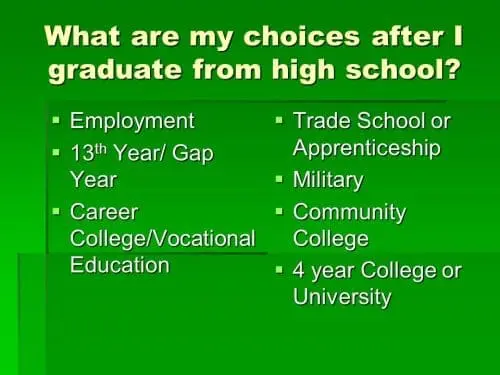In both a republic and a democracy, citizens are empowered to participate in a representational political system. They elect people to represent and protect their interests in how the government functions.
Key Takeaways
- Republics and democracies both provide a political system in which citizens are represented by elected officials who are sworn to protect their interests.
- In a pure democracy, laws are made directly by the voting majority, leaving the rights of the minority largely unprotected.
- In a republic, laws are made by representatives chosen by the people and must comply with a constitution that protects the rights of the minority from the will of the majority.
- The United States, while basically a republic, is best described as a “representative democracy.”
In a republic, an official set of fundamental laws, like the U.S. Constitution and Bill of Rights, prohibits the government from limiting or taking away certain inalienable rights of the people—even if that government was freely chosen by a majority of the people. In a pure democracy, the voting majority has almost limitless power over the minority.
The main difference between a democracy and a republic is the extent to which the people control the process of making laws under each form of government.
| Pure Democracy | Republic | |
| Power Held by | The population as a whole | Individual citizens |
| Making Laws | A voting majority has almost unlimited power to make laws. Minorities have few protections from the will of the majority. | The people elect representatives to make laws according to the constraints of a constitution. |
| Ruled by | The majority | Laws made by elected representatives of the people |
| Protection of Rights | Rights can be overridden by the will of the majority. | A constitution protects the rights of all people from the will of the majority. |
| Early Examples | Athenian democracy in Greece (500 BCE) | The Roman Republic (509 BCE) |
Is the U.S. a Democracy or a Republic?
The United States, like most modern nations, is neither a pure republic nor a pure democracy. Instead, it is a hybrid democratic republic. However, when the delegates of the United States Constitutional Convention debated the question in 1787, the exact meanings of the terms republic and democracy remained unsettled. At the time, there was no term for a representative form of government created “by the people” rather than by a king. In addition, American colonists used the terms democracy and republic more or less interchangeably, as remains common today.
In Britain, the absolute monarchy was giving way to a full-fledged parliamentary government. Had the Constitutional Convention been held two generations later, the framers of the U.S. Constitution, having been able to read the new constitution of Britain, might have decided that the British system with an expanded electoral system might allow America to meet its full potential for democracy.
Nevertheless, Founding Father James Madison may have best described the difference between a democracy and a republic:
“It [the difference] is that in a democracy, the people meet and exercise the government in person: in a republic, they assemble and administer it by their representatives and agents. A democracy, consequently, must be confined to a small spot. A republic may be extended over a large region.”
The fact that the Founding Fathers intended for the United States to function as a representative democracy, rather than a pure democracy, is illustrated in a letter from Alexander Hamilton to Gouverneur Morris dated May 19, 1777.1
“But a representative democracy, where the right of election is well secured and regulated & the exercise of the legislative, executive and judiciary authorities, is vested in select persons, chosen really and not nominally by the people, will in my opinion be most likely to be happy, regular and durable.”
The Concept of a Democracy
Coming from the Greek words for “people” (dēmos) and “rule” (karatos), democracy means “rule by the people.” As such, a democracy requires that the people be allowed to take part in the government and its political processes. U.S. President Abraham Lincoln may have offered the best definition of democracy as being “a government of the people, by the people, for the people” in his Gettysburg Address on November 19, 1863.
Typically through a constitution, democracies limit the powers of their top rulers, such as the President of the United States, set up a system of separation of powers and responsibilities between branches of the government, and protect the natural rights and civil liberties of the people.
In a pure democracy, all citizens who are eligible to vote take an equal part in the process of making laws that govern them. In a pure or direct democracy, the citizens as a whole have the power to make all laws directly at the ballot box. Today, some U.S. states empower their citizens to make state laws through a form of direct democracy known as the ballot initiative. Put simply, in a pure democracy, the majority truly does rule, and the minority has little or no power.
Representative Democracy
In a representative democracy, also called an indirect democracy, all eligible citizens are free and encouraged to elect officials to pass laws and formulate public policy representing the needs and viewpoints of the people. Today, representative democracies are very commonly utilized, by nations including the United States, the United Kingdom, and France.
Participatory Democracy
In a participatory democracy, eligible citizens vote directly on policy while their elected representatives are responsible for implementing those policies. In this manner, the people determine the social and economic direction of the state and the operation of its political systems. While representative and participatory democracies share similar ideals and processes, participatory democracies tend to encourage a higher level of citizen participation than traditional representative democracies.
While there are currently no countries specifically classified as participatory democracies, most representative democracies employ citizen participation as a tool for social and political reform. In the United States, for example, so-called “grassroots” citizen participation causes such as the women’s suffrage campaign have led elected officials to enact laws implementing sweeping social, legal, and political policy changes.
The concept of democracy can be traced back to around 500 BCE in Athens, Greece. Athenian democracy was a true direct democracy, or “mobocracy,” under which the public voted on every law, with the majority having almost total control over rights and freedoms.
The Concept of a Republic
Derived from the Latin phrase res publica, meaning “the public thing,” a republic is a form of government in which the social and political affairs of the country are considered a “public matter,” with representatives of the citizen body holding the power to rule. Because citizens govern the state through their representatives, republics may be differentiated from direct democracies. However, most modern representative democracies are republics. The term republic can also be attached to not only democratic countries but also to oligarchies, aristocracies, and monarchies in which the head of state is not determined by heredity.
In a republic, the people elect representatives to make the laws and an executive to enforce those laws. While the majority still rules in the selection of representatives, an official charter lists and protects certain inalienable rights, thus protecting the minority from the arbitrary political whims of the majority.
In this sense, republics like the United States function as representative democracies. In the U.S., senators and representatives are the elected lawmakers, the president is the elected executive, and the Constitution is the official charter.
Perhaps as a natural outgrowth of Athenian democracy, the first documented representative democracy appeared around 509 BCE in the form of the Roman Republic. While the Roman Republic’s constitution was mostly unwritten and enforced by custom, it outlined a system of checks and balances between the different branches of government. This concept of separate governmental powers remains a feature of almost all modern republics.
Republics and Constitutions
As a republic’s most unique feature, a constitution enables it to protect the minority from the majority by interpreting and, if necessary, overturning laws made by the elected representatives of the people. In the United States, the Constitution assigns this function to the U.S. Supreme Court and the lower federal courts.
For example, in the 1954 case of Brown v. Board of Education, the Supreme Court declared all state laws establishing separate racially segregated public schools for Black and white students to be unconstitutional. In its 1967 Loving v. Virginia ruling, the Supreme Court overturned all remaining state laws banning interracial marriages and relationships.
More recently, in the controversial Citizens United v. Federal Election Commission case, the Supreme Court ruled 5-4 that federal election laws prohibiting corporations from contributing to political campaigns violated the corporations’ constitutional rights of free speech under the First Amendment. Further, the constitutionally granted power of the judicial branch to overturn laws made by the legislative branch illustrates the unique ability of a republic’s rule of law to protect the minority from a pure democracy’s rule of the masses.





